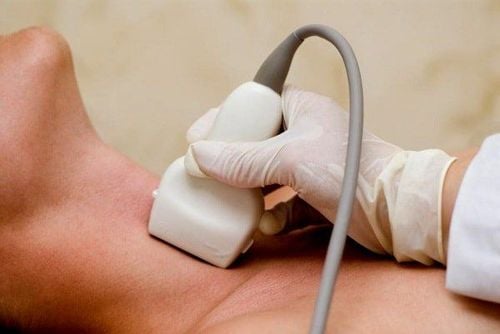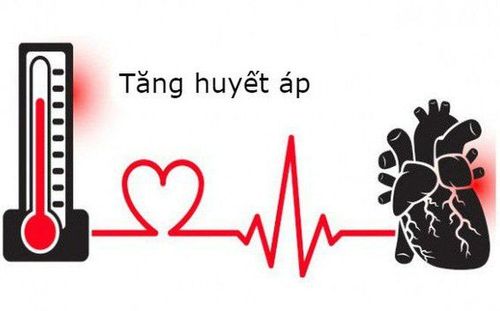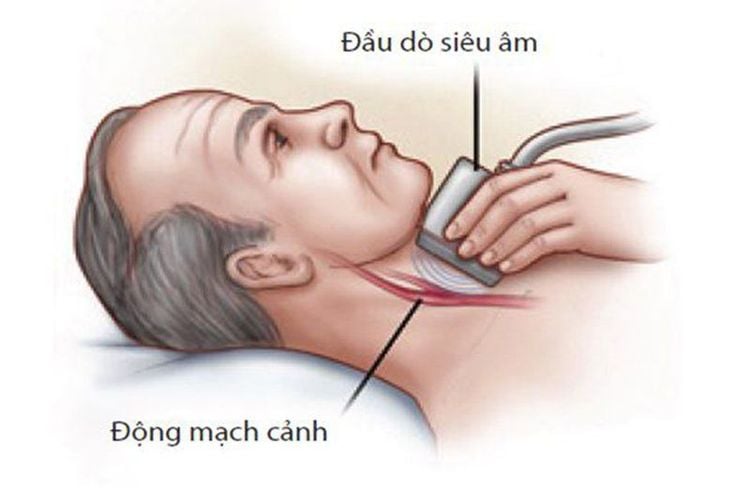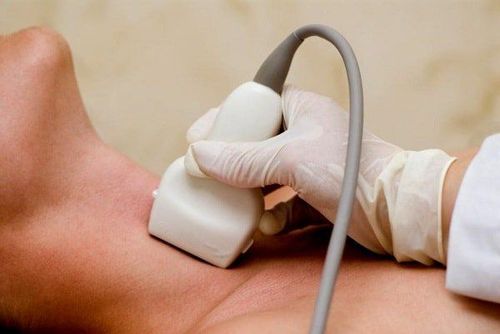This is an automatically translated article.
The article is professionally consulted by Master, Doctor Le Xuan Thiep - Radiologist - Department of Diagnostic Imaging - Vinmec Ha Long International Hospital. The doctor has extensive experience in the field of diagnostic imaging.Carotid ultrasound is often used to detect atherosclerotic plaques in the artery walls. From the detection of plaque on the artery wall, the doctor will check the nature and prognosis of the plaque and determine the degree of carotid artery stenosis and occlusion.
1. What is carotid ultrasound?
The carotid artery is a large branch from the thoracic aorta that branches up to feed the brain. There are two carotid arteries on either side, branching at the neck region, above the thyroid cartilage, at the level of the 4th cervical vertebra, the wall of the internal and external carotid arteries. Diseases that damage these 2 arteries often lead to many other dangerous diseases, so carotid ultrasound is one of the methods to diagnose the disease.Carotid ultrasound, also known as carotid doppler ultrasound, uses reflected ultrasound waves to create images similar to those of the blood vessels in the neck for diagnosis. This ultrasound method is painless and safe for the patient to examine the structure and function of the carotid artery in the neck. A carotid doppler ultrasound can help your doctor see if there are any blockages in your arteries and if blood is flowing through them.
Carotid doppler ultrasound is often used to detect plaque in the artery wall. From the detection of atherosclerotic plaque on the artery wall, the doctor will:
Check whether the plaque is calcified or mixed There is no ulcer inside the atherosclerotic plaque Prognosis for arterial plaque good or bad vascularity based on shoreline, length, thickness and echogenicity. Determine the degree of complete or incomplete carotid artery occlusion and stenosis.

Siêu âm doppler động mạch cảnh thường được sử dụng để phát hiện mảng xơ vữa bám tại thành động mạch
2. When should carotid ultrasound?
You or your doctor may recommend a carotid Doppler ultrasound if you feel any of the following:Have underlying medical conditions such as high blood pressure, diabetes, and high blood cholesterol. Patient or family history of recent stroke. Minor stroke may also be indicated by carotid ultrasound (the manifestation of a minor stroke is that the patient has some or all of the symptoms of a cerebrovascular accident, but these symptoms usually disappear within a short period of time). 1 day). On examination, the doctor heard a carotid murmur. A carotid murmur is an abnormal sound in the carotid artery, which may be a symptom of a blockage in the carotid artery and is a risk factor for stroke. The carotid artery wall is suspected to be delaminated and weakened, affecting blood flow to the brain. Carotid ultrasound can also be ordered to check the recovery after vascular surgery: aorta, carotid artery, coronary artery, peripheral artery,... Sometimes carotid ultrasound is performed for people at high risk of stroke as a preventive test, usually people over 70 years old with medical conditions: diabetes, high blood pressure, atherosclerosis, dyslipidemia, .. Carotid doppler ultrasound to check for stroke risk combines abdominal ultrasound to check for potential abdominal aortic aneurysms, enlarged, or large arteries that supply blood to the pelvis, abdomen, and legs. . To evaluate the effectiveness of placement and treatment of stents, mesh tubes are used to improve arterial blood flow and support weakened arteries. Locate hematomas that can inhibit blood flow and find other abnormalities in the structure of the carotid artery that can disrupt blood flow

Nếu bạn có nền bệnh tăng huyết áp, bác sĩ có thể chỉ định bạn siêu âm doppler mạch cảnh
3. Steps to perform carotid ultrasound
Carotid ultrasound is a painless and very safe technique for the patient. When using this method usually only takes about 15 - 30 minutes. The procedure to perform carotid ultrasound technique is as follows:Step 1: Prepare the ultrasound room, equipment, ultrasound equipment and a doctor or skilled technician to meet the ultrasound process. Then, the carotid sonographer checks the operation of the ultrasound machine. Step 2: Instruct the patient to lie on his or her back, with the chin slightly upward to clearly expose the neck area to be scanned. Step 3: Perform ultrasound by applying a layer of gel on the patient's neck to help the transducer move smoothly, supporting the sound waves to go to the carotid arteries better. Step 4: Move the transducer on the gel layer to emit ultrasound waves that go to the carotid artery and reflect it back, thereby reproducing images and displaying abnormalities on the computer screen. The high-frequency linear transducer (> 7 MHz) is the ideal probe for the evaluation of intima-media thickness and plaque morphology, while the low-frequency linear probe (< 7 MHz) is commonly used to examine Doppler observation. In the case of short neck muscles, if a straight transducer is not available, a curved transducer (< 7 Mhz) may be useful to reveal the anatomy of the carotid bifurcation. Step 5: At the end of carotid ultrasound, instruct the patient to wipe off the gel and return to normal activities. Based on the observed images, the doctor will inform the patient about the condition of his carotid artery and give advice and prescribe in case the patient needs treatment.

Siêu âm động mạch cảnh là một kỹ thuật không gây đau đớn và rất an toàn cho người bệnh
Please dial HOTLINE for more information or register for an appointment HERE. Download MyVinmec app to make appointments faster and to manage your bookings easily.
SEE MORECarotid Doppler ultrasound Carotid stenosis: Causes, symptoms, diagnosis and treatment What is the carotid artery? Common carotid artery diseases













